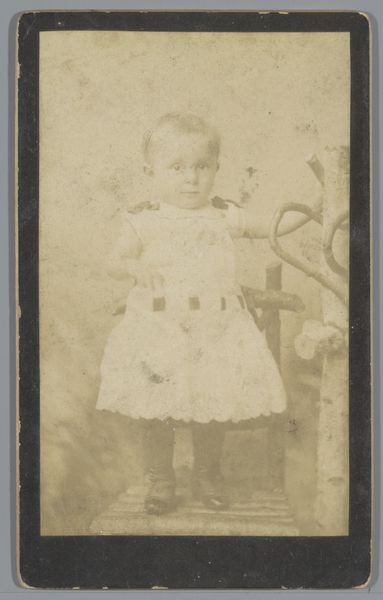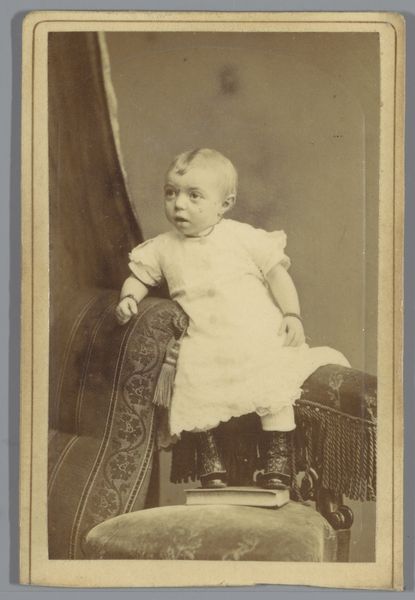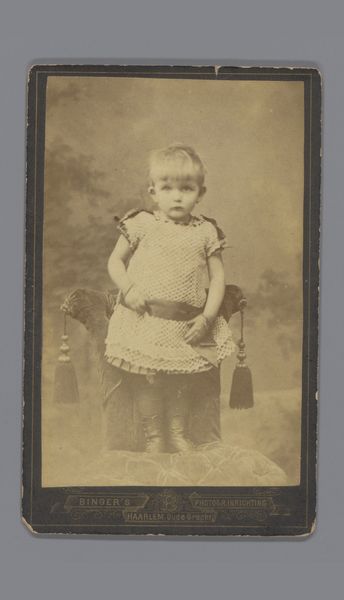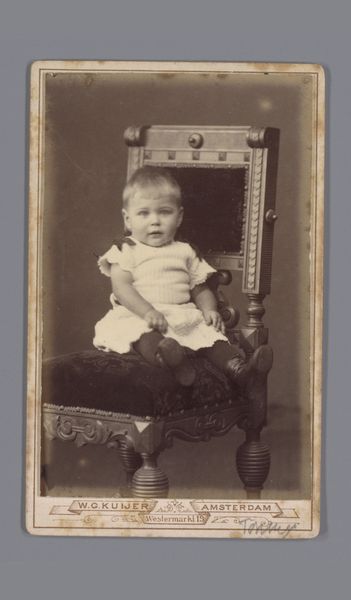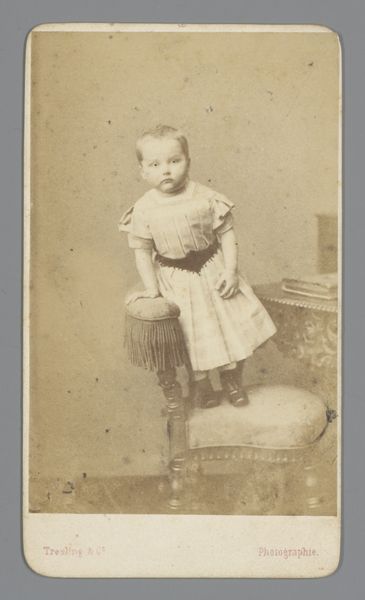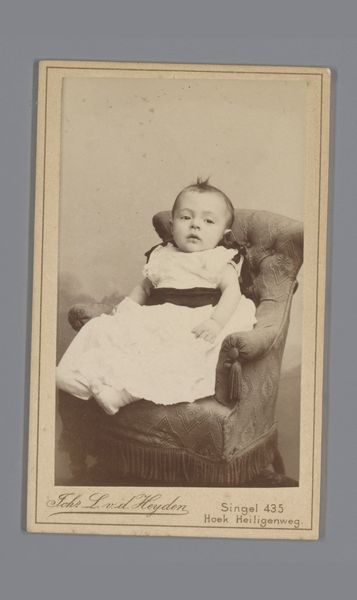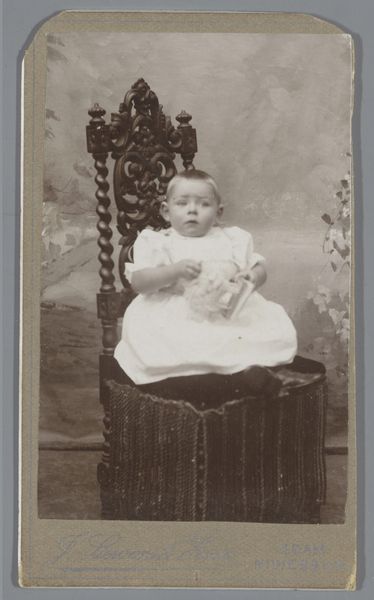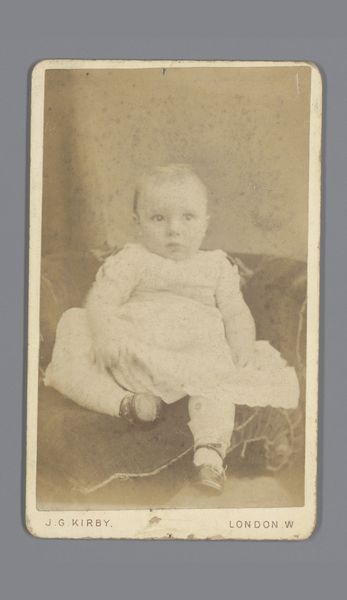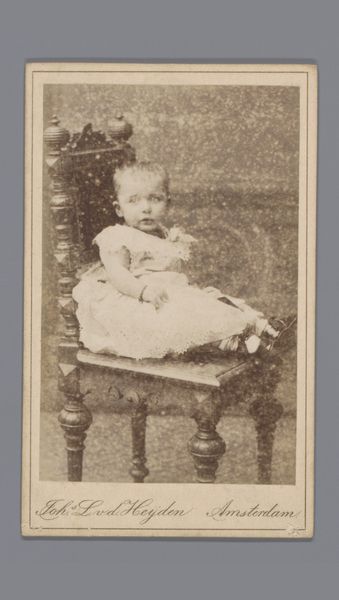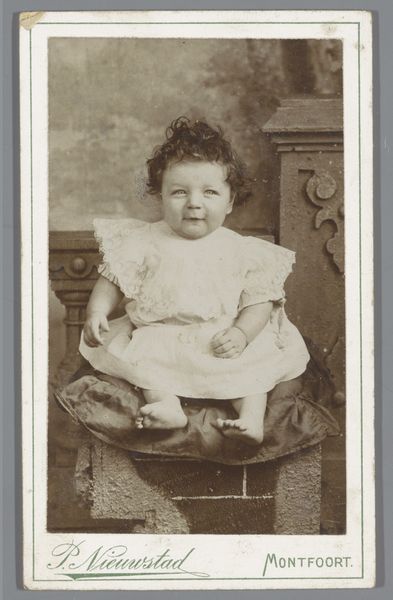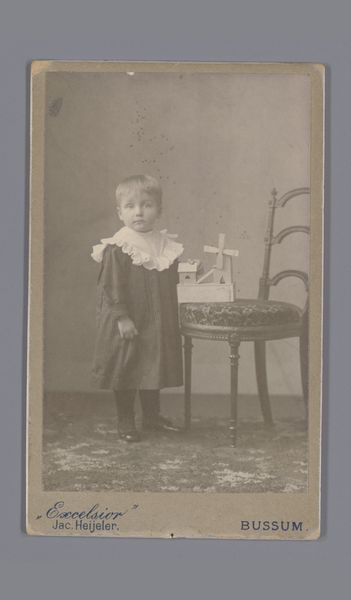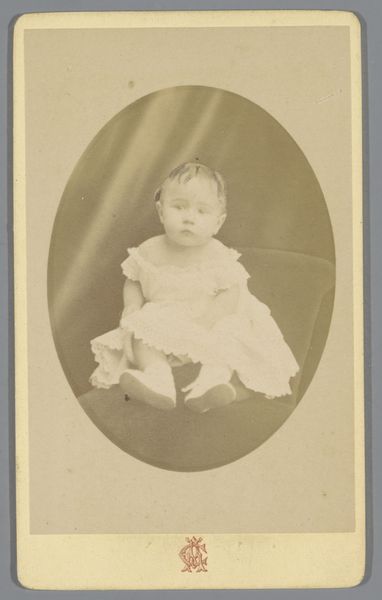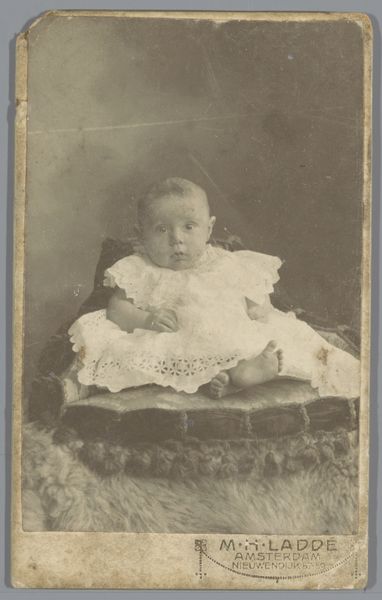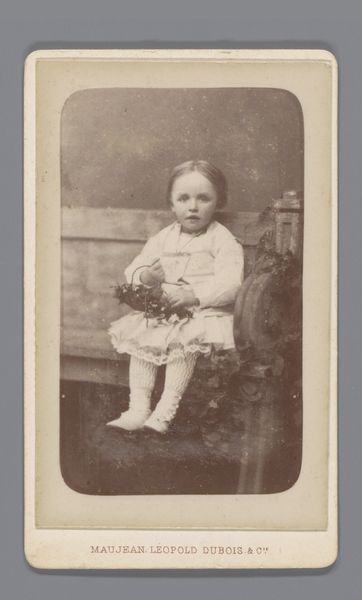
Dimensions: height 103 mm, width 64 mm
Copyright: Rijks Museum: Open Domain
Editor: This charming photograph, "Portret van een onbekend kind op een zuil," dating from around 1885 to 1915 by Willem Oldenkamp, immediately struck me. The child perched on that column seems so solemn. What historical context can you provide to enrich my understanding? Curator: This photograph, a printed carte de visite, exemplifies the rise of studio portraiture and its democratization. What was once the domain of the elite became increasingly accessible. Note the backdrop; it is a generic scene. How does the child's presentation—clothing and the column—play into constructing an aspirational image? Editor: It’s interesting you point that out. I hadn’t thought about the aspirational aspect, more of the theatrical staging for the photograph. It makes me think of a mini monument in their honour, what's the statement here in showing this 'unknown' child? Curator: Exactly. Consider the photographic studio as a performative space where social identities were curated and presented. It highlights how photography served to reinforce, or even create, social narratives. The "unknown" child, elevated on a pillar, became a symbolic representation, perhaps hinting at future promise, or perhaps simply mimicking tropes popular at the time. How do you feel this contrasts with contemporary portraiture? Editor: Contemporary photos are, I suppose, seemingly ‘raw’ and 'real', there's a strive for authentic portrayals. Back then, photographs were curated stages, projecting intended meanings, influencing our social perspective by framing the everyday individual in specific narratives. Curator: Precisely. By understanding this, we are not simply looking at an image of a child. We are witnessing a staged construction intended for public viewing and influencing the status and role of portraiture itself. Editor: That has reshaped my whole interpretation of this photo. I will now approach it considering what it meant to present oneself during that period. Thanks for highlighting that, it opens a fascinating way to reconsider old portrait photographs! Curator: My pleasure. Thinking about the socio-cultural purposes and institutional framework through which art is created offers many insights!
Comments
No comments
Be the first to comment and join the conversation on the ultimate creative platform.
